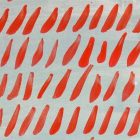Ploughshares Spring 2015: An Extended Introduction by Guest Editor Neil Astley
 Why is it that most American poets know very little about contemporary poetry from Britain and Ireland? A good number of them are published in Britain; they give readings at festivals in the UK and Ireland where they’re able to meet and hear the work of their British and Irish counterparts. Many of the poets they meet here will not only be much more familiar with current American poetry than the Americans are with British and Irish poetry, they will also have been influenced by a wide range of American poets—modernist, postmodernist and mainstream alike. A number of American poets have even become role models to British poets, including John Ashbery and Jorie Graham for our postmoderns, Sharon Olds for women poets, and Terrance Hayes for the younger generation of British black and Asian poets.
Why is it that most American poets know very little about contemporary poetry from Britain and Ireland? A good number of them are published in Britain; they give readings at festivals in the UK and Ireland where they’re able to meet and hear the work of their British and Irish counterparts. Many of the poets they meet here will not only be much more familiar with current American poetry than the Americans are with British and Irish poetry, they will also have been influenced by a wide range of American poets—modernist, postmodernist and mainstream alike. A number of American poets have even become role models to British poets, including John Ashbery and Jorie Graham for our postmoderns, Sharon Olds for women poets, and Terrance Hayes for the younger generation of British black and Asian poets.
So why does most of the traffic appear to be one-way?
The main cause, I believe, has been the partial, haphazard and, in some cases, falsified ways in which British and Irish poetry has been presented to American writers and readers by publishers and editors of anthologies and magazines.
There are representative anthologies, but few of these seem to have travelled the Atlantic or been picked up in the US—mostly notably four books offering millennial overviews: Poetry in Britain and Ireland after 1945, edited by Sean O’Brien (Picador, 1998); The Penguin Book of Poetry from Britain and Ireland since 1945, edited by Simon Armitage and Robert Crawford (Viking, 1998); Harvill Book of Twentieth-Century Poetry in English, edited by Michael Schmidt, which covers the US and Australia as well as Britain and Ireland (Vintage, 1999); and Bloodaxe Book of 20th Century Poetry from Britain and Ireland, edited by Edna Longley (Bloodaxe, 2000).
There’s also a four-book “chain” of anthologies representing successive generations of British and Irish poets, beginning with A. Alvarez’s The New Poetry (Penguin, 1962). Prefaced with selections by four influential Americans (Berryman and Lowell, with Sexton and Plath added to the revised 1965 edition) and his combative “Beyond the Gentility Principle” essay, Alvarez sought to represent “the most significant work of the British poets who began to come into their own in the ’50s” (no Irish allowed here). Only five of Alvarez’s poets, however, are still with us.
Blake Morrison and Andrew Motion then pick up the baton with their Penguin Book of Contemporary British Poetry (Penguin, 1982), which covers just twenty poets first published in the ’60s and ’70s—mostly poets with “a shared interest in narrative” (including James Fenton, Motion himself, and working-class chroniclers Tony Harrison and Douglas Dunn) or “a pleasure in metaphor” (Craig Raine’s short-lived three-man Martian “school”), plus six poets from Northern Ireland. The anthology’s seminal poet, Seamus Heaney, was to rail against his inclusion under the editors’ “British” banner in his 198-line verse epistle “An Open Letter” (1983): “My passport’s green / No glass of ours was ever raised / To toast The Queen.”
None of Alvarez’s poets are included in Penguin Book of Contemporary British Poetry, and none of Morrison’s and Andrew’s were selected by Michael Hulse, David Kennedy, and David Morley for The New Poetry (Bloodaxe Books, 1993), the next book in the “chain,” which covers “what we believe to be the best poetry written in the British Isles in the 1980s and early 1990s by a distinctive new generation of poets.” This features over fifty poets, including (in order of age) David Constantine, Selima Hill, Peter Reading, George Szirtes, Sean O’Brien, Jo Shapcott, John Burnside, Carol Ann Duffy, Sujata Bhatt, Kathleen Jamie, Glyn Maxwell, and Simon Armitage from Britain; and Eavan Boland, Paul Durcan, Ciaran Carson, Nuala Ní Dhomhnaill (writing in Irish), and Matthew Sweeney from Ireland. Key notes sounded here are pluralism, political engagement, social awareness, scepticism, and freedom of imagination.
Fourth in the chain is, Roddy Lumsden’s Identity Parade: new British & Irish poets (Bloodaxe Books, 2010), representing “the new generation of poets who have emerged since the mid-1990s.” It was the first anthology of its kind to include more women poets than men. Pluralistic, ethnically diverse, embracing both mainstream and experimental writing, Lumsden took some of his inspiration from a comparable American anthology: Legitimate Dangers: American Poets of the New Century, edited by Michael Dumanis and Cate Marvin (Sarabande Books, 2006).
While this generational anthology “chain” highlights most of the significant British and Irish poets of the past fifty years, these poets’ later works are largely absent. The most influential and most read poets of each period are usually represented in the preceding anthologies by their earlier work. In addition, with the notable exception of Lumsden, these generational anthology editors have chosen not to represent the writers of the so-called “British Poetry Revival”— American modernist-influenced avant-gardists mostly active during the ’60s and ’70s, despite these including such major figures as J.H. Prynne.
Their own anthologies would include A Various Art, edited by Andrew Crozier and Tim Longville (Carcanet, 1987) and The New British Poetry, edited Gillian Allnutt, Fred D’Aguiar, Ken Edwards, and Eric Mottram (Paladin, 1988)—the latter showcasing “the work of black, feminist, open form and ‘experimental’ writers, in the belief that it is here that the real energy and innovation in contemporary British poetry are to be found.” More recently, Nathan Hamilton, in Dear World & Everyone In It: new poetry in the UK (Bloodaxe Books, 2013), has produced a younger British counterpart to Cole Swenson and David St. John’s American Hybrid (Norton, 2009), going further even than Lumsden in mixing poets writing in “mainstream” and experimental styles.
Yet “mainstream” has been something of a misnomer in British and Irish poetry since 1980, with many of the poets derided as such by the avant-garde being nourished in part by the work of modernist and postmodern American and European poets. Several poets claimed by the avant-garde as their own have been read and valued by “mainstream” poets and their readership—most notably Basil Bunting, Roy Fisher, Barry MacSweeney, Edwin Morgan, and Denise Riley.
When we turn to compilations of contemporary British and Irish poetry readily available to American readers, however, the problems are immediately apparent. By far the worse example here is Keith Tuma’s Anthology of Twentieth-Century British & Irish Poetry (2001), published by the American arm of Oxford University Press, an annotated Norton-style compendium so wayward in its coverage as to be less a guide than a work of fiction. Tuma’s bizarre map of the territory is almost as fanciful as Mandeville’s Travels, dotted with unfamiliar beasts in the form of obscure avant-gardists most readers and poets in Britain and Ireland have never heard of, let alone read, which makes one question how such a book can be useful to its intended readership, American college students wanting an introduction to British and Irish poetry since Yeats and Hardy.
Tuma’s book wouldn’t be so perverse an undertaking if he hadn’t also managed to omit–from an anthology of 126 poets–some of the most significant figures in British and Irish poetry of the past hundred years. Over half the poets included in Morrison and Motion’s already highly selective Penguin Book of Contemporary British Poetry are omitted, along with seminal earlier writers such as John Hewitt, R.S. Thomas and Edwin Morgan, and most of the critically acclaimed poets from the generation represented in Bloodaxe’s The New Poetry who’ve since become recognised as the leading British and Irish poets of today.
Tuma’s revisionism was a red rag to the bullish Don Paterson, co-editor with Charles Simic of New British Poetry (Graywolf, 2004). Unfortunately, Paterson’s ill-tempered introduction–largely a tirade against the hated “Postmoderns”–must have limited the critical reception and potential readership of a lively, representative anthology mostly covering the younger and middle generations of British poets represented by Morrison/Motion (1982) and Hulse/Kennedy/Morley (1993) but excluding their Irish contemporaries. With no proper context to the work presented, this anthology is less than helpful in opening up a readership for new British poetry; not only is there no critical background, but there are no biographical or other notes on the poets–not even their dates of birth. Yes, the poems should speak for themselves, but that doesn’t work if no one’s listening.
In 2005, the writer Bernardine Evaristo approached Arts Council England with her concerns about the lack of publishing opportunities in Britain for poets of colour (or BME to use the current jargon: British Minority Ethnic). They responded by funding the Free Verse report (2007) which showed that less than one percent of the books published by major poetry presses in the UK were by black and Asian writers: this in a multicultural country with a fourteen percent non-white population. A national mentoring programme for BME poets called The Complete Works was subsequently set up by the Spread the Word writer development agency, which has since produced two anthologies co-published with Bloodaxe: Ten: new poets from Spread the Word, edited by Bernardine Evaristo and Daljit Nagra (2010), and Ten: the new wave, edited by Karen McCarthy Woolf (2014).
Both of these books were launched with high profile public readings and debates focussing on the disparity between the significant grassroots readership and events network supporting BME poets and the lack of support from out-of-touch publishers. The latest statistics do show improvements, with the proportion of BME poets published by major presses increased from one percent to eight percent—and most of these poets are with just three imprints: the independents Bloodaxe, Carcanet, and Peepal Tree.
It can’t be coincidental that Bloodaxe in Northumberland and Carcanet in Manchester are also responsible for publishing most of the American poets available here (along with Shearsman Books in Bristol), and most poetry in translation (along with Arc Publications in Lancashire). Britain’s other main poetry imprints—the commercial houses of Faber, Cape, and Picador in London—seem parochial and out-of-touch compared with their “provincial” counterparts, publishing only a handful of American and European poets, and hardly any non-white poets. While it is only possible for my spring issue of Ploughshares to offer a snapshot of current British and Irish poetry, I have tried to make it as representative as possible.



